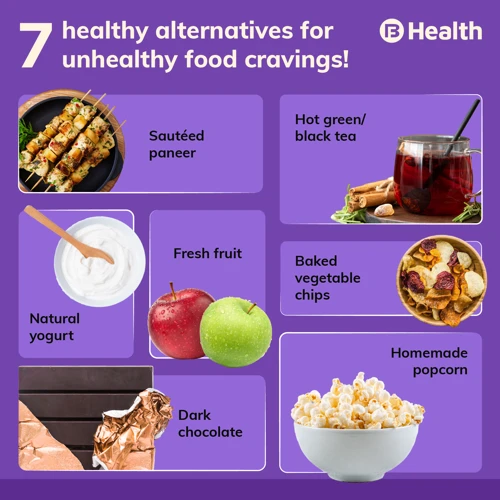Are you struggling to feel full while trying to lose weight? It can be frustrating to feel hungry all the time and not be able to enjoy your meals. The good news is there are simple ways to make your meals more filling without sacrificing flavor or variety. In this article, we will share 10 effective tips to help you feel satisfied and nourished while on a weight loss journey. From incorporating fiber-rich foods to picking the right proteins and fats, to adding spice and savor to your meals, we’ve got you covered. Follow these steps and you’ll be on your way to a healthier, happier you.
1. Add More Fiber
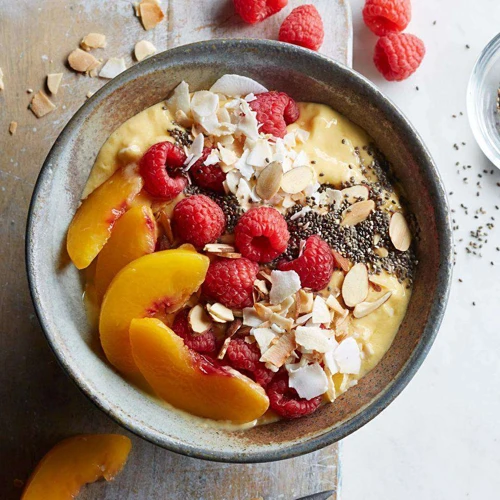
Do you find yourself constantly hungry and snacking between meals while trying to lose weight? Adding more fiber to your meals can help you feel full for longer periods of time, which can reduce the temptation to overeat. Not only will fiber help you maintain a healthy weight, but it also has numerous health benefits such as improved digestion and lower cholesterol levels. In this section, we’ll explore different ways of adding fiber to your meals. Don’t forget to check out our veggie-based meal ideas for more inspiration on eating healthy.
1.1. Include Fruits and Vegetables
Including fruits and vegetables in your meals is a great way to add fiber, water, and nutrients to your diet without adding too many calories. Studies have shown that people who eat more fruits and vegetables tend to have a lower body weight and better overall health.
Here are some fruits and vegetables to consider adding to your meals:
| Fruit | Nutrition |
|---|---|
| Apples | Low in calories and high in fiber, vitamin C, and antioxidants |
| Berries (strawberries, blueberries, raspberries) | Low in calories and high in fiber, vitamin C, and antioxidants. Berries are also known to help reduce inflammation. |
| Bananas | A good source of potassium and vitamin C, bananas are also high in fiber and relatively low in calories. |
| Oranges | High in vitamin C and fiber, oranges are also low in calories. |
| Grapefruit | Low in calories and high in vitamin C, grapefruit is also known to help reduce insulin resistance and lower cholesterol levels. |
| Vegetable | Nutrition |
|---|---|
| Leafy Greens (spinach, kale, arugula) | Low in calories and high in fiber, vitamins A and C, and antioxidants. Leafy greens are also known to help reduce inflammation. |
| Cruciferous Vegetables (broccoli, cauliflower, brussels sprouts) | Low in calories and high in fiber, vitamins C and K, and antioxidants. |
| Carrots | A good source of fiber, vitamin C, and beta-carotene. |
| Bell Peppers | Low in calories and high in vitamin C, bell peppers come in a variety of colors and add flavor and crunch to any dish. |
| Squash | Low in calories and high in fiber and vitamins A and C, squash can be roasted, sautéed, or used in soups and stews. |
Adding fruits and vegetables to your meals not only adds variety and flavor, but can also help you feel fuller and more satisfied. Consider adding some sliced fruit to your morning oatmeal or yogurt (/low-cal-breakfast-ideas/) or having a side salad with your lunch or dinner (/quick-easy-meals-busy-weekdays/).
1.2. Choose Whole Grains
Choosing whole grains is an important step towards making your meals more filling during weight loss. Whole grains are a great source of fiber and can help you feel fuller for longer periods of time. Here are some examples of whole grains that you can incorporate into your meals:
| Whole Grains | Benefits | Meal Ideas |
|---|---|---|
| Brown rice | High in fiber and can help improve digestion | Pair with lean protein and vegetables for a filling stir-fry |
| Quinoa | A complete protein source and high in fiber | Make a quinoa and vegetable salad for a nutritious lunch |
| Barley | Contains both soluble and insoluble fiber, which can help lower cholesterol and aid in digestion | Add cooked barley to soups or stews for a hearty meal |
| Whole wheat pasta | Higher in fiber and nutrients than regular pasta | Prepare with vegetables and lean protein for a filling dinner |
Incorporating whole grains into your meals not only helps you feel fuller, but also provides your body with important nutrients and improves digestion. Try experimenting with different whole grains to find what works best for you and your taste preferences.
2. Pick Lean Protein
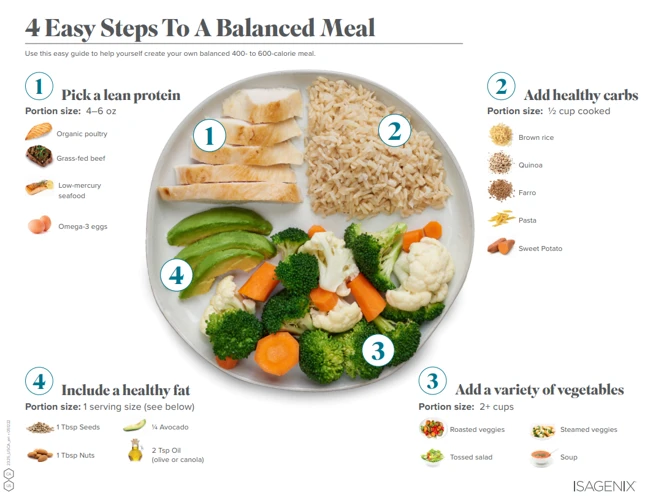
When it comes to weight loss, incorporating lean protein into your meals can help keep you feeling full and satisfied. Not all protein sources are created equal, though. It’s important to choose lean options that are lower in fat and calories while still providing the necessary nutrients your body needs. Here are some ideas for selecting and preparing lean protein to support your weight loss goals.
2.1. Opt for Chicken and Turkey
Lean protein is essential for weight loss and chicken and turkey are great options to keep you full while shedding pounds. They provide essential nutrients without adding too many calories to your diet. Here is a table that highlights the nutritional value of chicken and turkey:
| Nutrient | Chicken Breast (3 oz) | Turkey Breast (3 oz) |
|---|---|---|
| Calories | 140 | 120 |
| Protein | 26g | 26g |
| Carbohydrates | 0g | 0g |
| Fat | 3g | 1g |
| Fiber | 0g | 0g |
As you can see, chicken and turkey are both low in calories and high in protein. They also have no carbohydrates or fiber, which means they won’t contribute to weight gain. Opting for lean cuts of these meats can help you stay full while keeping your calorie intake in check. Additionally, they can be easily incorporated into a variety of recipes, from salads to stir-fries. So, make sure to include chicken and turkey in your meals for a healthy and filling option.
2.2. Try Legumes
One great way to add more filling protein to your meals is by incorporating legumes. These can include options such as lentils, chickpeas, black beans, and kidney beans. Here are a few ways to integrate legumes into your diet:
- Add lentils to your soups and stews. Lentils not only add protein, but they also help thicken up the dish to make it more satisfying.
- Mix beans into your salads. Adding a variety of beans to your salad can help amp up the protein content and also make the salad more filling.
- Make bean-based dips and spreads. Hummus, black bean dip, and lentil spread are all great options to use as a snack or to spread on sandwiches instead of mayo.
- Use chickpeas as a meat replacement. Chickpeas can be used in place of chicken in many recipes, such as in a vegetarian curry or as a topping on a vegetarian pizza.
Legumes can also be an affordable and sustainable source of protein, making them a great addition to any weight loss plan.
3. Don’t Forget Healthy Fats

While it’s common to associate fats with weight gain, the reality is that not all fats are created equal. In fact, incorporating healthy fats into your diet can actually aid in weight loss by increasing satiety and helping to regulate blood sugar levels. It’s important not to forget about the importance of including healthy fats in your meals. Here are some tips for how to incorporate them into your diet in a way that supports your weight loss goals.
3.1. Use Avocado and Nuts
When it comes to adding healthy fats to your meals to make them more filling, avocado and nuts are a great option. Not only do they increase satiety, but they are also packed with essential nutrients.
Avocado:
– Avocado is a great source of monounsaturated fats, which have been shown to decrease inflammation and improve heart health.
– This fruit can easily be mashed up and used as a spread in sandwiches or as a topping for salads.
– Avocado can also be sliced and added to omelets or used as a base for homemade salad dressings.
Nuts:
– Nuts are a rich source of healthy fats, protein, and fiber, making them a great snack option to ward off hunger.
– Almonds, peanuts, walnuts, and cashews are all nutrient-dense options that can be enjoyed as a small snack throughout the day or added to meals.
– Adding a handful of chopped nuts to oatmeal or yogurt can help to increase the protein and healthy fat content of your breakfast.
– Nuts can also be added to salads or used as a crunchy topping for roasted vegetables.
3.2. Cook with Olive Oil
One easy way to make your meals more filling during weight loss is to cook with olive oil. While it may seem counterintuitive to add fat to your diet when trying to lose weight, a small amount of healthy fat can actually help you feel fuller and more satisfied after a meal.
Olive oil is a great choice because it is high in monounsaturated fats, which have been shown to improve cholesterol levels and reduce the risk of heart disease. It also has a high smoke point, which means you can use it to cook at high temperatures without it burning and producing harmful compounds.
Here are some ways to incorporate olive oil into your meals:
| Meal | How to Use Olive Oil |
|---|---|
| Salad | Make a simple vinaigrette using olive oil, vinegar, and your favorite herbs and spices. Drizzle over a bed of greens and enjoy! |
| Roasted Vegetables | Toss your favorite vegetables in olive oil and seasonings, then roast in the oven until tender and golden brown. This will add flavor and healthy fat to your dish. |
| Stir Fry | Heat up a small amount of olive oil in a pan or wok, then add your favorite vegetables, lean protein, and seasonings. The oil will help keep the ingredients from sticking to the pan and give them a nice crispiness. |
| Pasta | After cooking your pasta, toss it with a bit of olive oil and your favorite sauce. The oil will add richness and depth of flavor to the dish. |
When using olive oil, be sure to measure it out carefully to avoid adding too many calories to your meals. A tablespoon of olive oil contains around 120 calories, so use it sparingly. Another tip is to choose extra-virgin olive oil, which is made from the first pressing of the olives and has higher levels of antioxidants compared to other types of olive oil.
Cooking with olive oil is a simple way to make your meals more filling and satisfying during weight loss. By incorporating this healthy fat into your diet, you will be able to keep hunger at bay and stick to your weight loss goals.
4. Start with a Soup or Salad
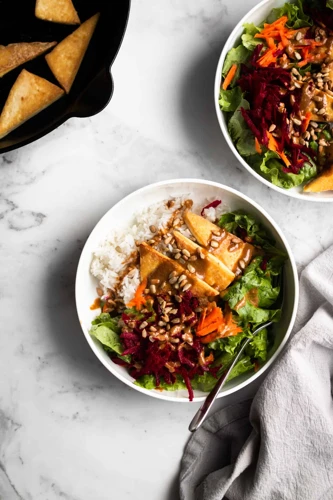
One effective way to make your meals more filling during weight loss is by starting with a soup or salad. This may seem counterintuitive, but several studies have shown that starting a meal with a bowl of low-calorie soup or a salad can help reduce overall calorie intake.
Why does this work?
Firstly, both soup and salad are high in fiber and water content. These help you feel full quicker and stay full longer. Additionally, since soups and salads have a high volume but low calorie content, they are a great way to fill up your stomach without consuming too many calories.
Tips for making a filling soup or salad:
When making a soup, opt for broth-based soups instead of creamy ones. Broth-based soups are low in calories, high in water content, and can be packed with veggies and lean protein. When making a salad, choose leafy greens as a base and add various veggies to increase the fiber and nutrient content. However, be mindful of the dressing you choose – a creamy dressing can easily turn a healthy salad into a calorie-dense meal.
Other benefits of starting with soup or salad:
Aside from reducing calorie intake, starting with a soup or salad also provides various health benefits. For instance, studies have shown that consuming soup or salad before meals can help control blood sugar levels, reduce overall cholesterol levels, and promote healthy digestion.
Conclusion:
Starting a meal with a bowl of soup or a salad is an effective way to make your meals more filling during weight loss. They are low in calories, high in fiber and water content, and can provide various health benefits. Remember to choose broth-based soups and leafy greens for salads, and be mindful of the dressing you use.
5. Spice Up Your Meals

Spicing up your meals can help make them more filling during weight loss. Not only do spices add flavor and variety to your meals, but they can also provide additional health benefits. For example, research has shown that adding spices such as cinnamon, turmeric, and cumin to your meals can help regulate blood sugar levels and reduce inflammation in the body.
To spice up your meals, try experimenting with different herbs and spices. Some good options include garlic, ginger, basil, thyme, and rosemary. You can use fresh or dried herbs depending on what you have available. For example, fresh basil is a great addition to salads and pasta dishes while dried thyme is delicious on roasted vegetables or chicken.
Another way to add flavor to your meals is to use spice blends or marinades. You can make your own spice blends with a combination of different herbs and spices or look for pre-made options at the grocery store. As for marinades, try using a mixture of herbs, spices, and acid (such as lemon juice or vinegar) to help tenderize and add flavor to meat or tofu before cooking.
It’s important to note that while spices can add flavor and nutrition to your meals, they should not be used to mask unhealthy ingredients or excessive amounts of sodium. Always aim to use fresh, whole ingredients and aim for a balanced meal that includes lean protein, fiber, healthy fats, and complex carbohydrates.
6. Drink More Water
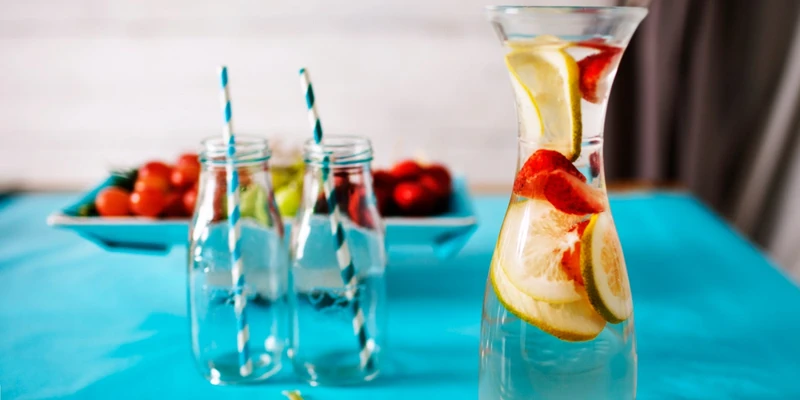
One effective way to make your meals more filling during weight loss is by increasing your water intake. Water not only keeps you hydrated and healthy, but it can also help you feel full and reduce your overall calorie intake. According to a study published in the journal Obesity, drinking water before a meal can help you consume fewer calories during that meal.
How Much Water Should You Drink?
The amount of water you should drink each day can depend on a variety of factors, including your weight, activity level, and climate. However, a general rule of thumb is to aim for at least 8 glasses of water per day. If you find it difficult to drink plain water, try infusing it with fruits like lemon or cucumber for added flavor.
When Should You Drink Water?
While it’s important to stay hydrated throughout the day, drinking water before a meal can be particularly beneficial for weight loss. Try drinking a glass of water 30 minutes before your meal to help you feel full and prevent overeating. Drinking water during your meal can also help you eat more slowly and mindfully, which can lead to better digestion and satiety.
Other Benefits of Drinking Water
In addition to aiding in weight loss, drinking more water can have a multitude of health benefits. It can improve your skin health, boost your immune system, and even reduce the risk of certain diseases like kidney stones and urinary tract infections.
Conclusion
Drinking more water is a simple yet effective way to make your meals more filling during weight loss. By staying hydrated, you can help reduce your overall calorie intake and feel fuller for longer periods of time. Plus, the added health benefits of drinking water make it an essential part of any weight loss journey.
7. Slow Down and Chew

Eating too quickly can cause you to overeat and make you feel less satisfied with your meal. Incorporating the habit of slowing down and chewing your food is an effective way to make your meals more filling and to help you achieve your weight loss goals. By taking the time to chew your food slowly and thoroughly, you allow your brain to receive the messages that the stomach is full and that it’s time to stop eating.
One way to help you slow down is to put your utensils down between bites. This helps you to be more conscious of each bite and chew it properly. Additionally, try to savor the flavors and textures of your food by paying attention to the taste and enjoying each bite. This will also help to slow down your eating pace.
If you’re used to eating quickly, it may take some time to develop the habit of slowing down and chewing your food. One tip is to practice mindful eating at each meal. This involves cutting out all distractions such as TV or your phone and focusing solely on your food. By taking the time to really concentrate on what you’re eating, you will be more aware of your body’s hunger and fullness signals, allowing you to make more informed decisions about when to stop eating.
Incorporating the habit of slowing down and chewing into your meals can be a powerful tool in helping you to feel more satisfied and full after each meal, ultimately leading to weight loss success.
8. Use Smaller Plates
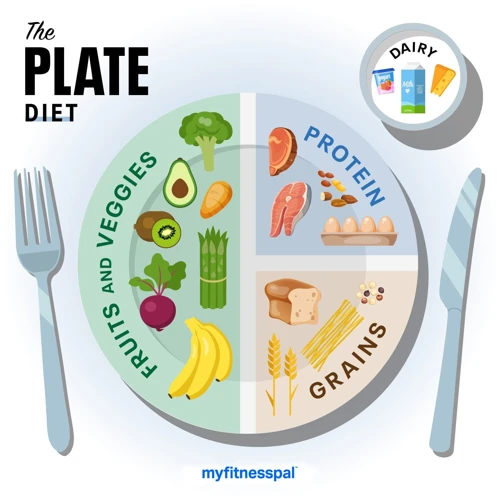
Using smaller plates is an effective and simple way to make your meals more filling during weight loss. Research has shown that people tend to eat less when they use smaller plates. This is because when we see a full plate, our brain perceives it as a full meal and sends signals to stop eating once we feel satisfied.
So, how can you implement this technique into your daily routine?
Start by swapping your regular sized dinner plates for smaller ones. Choose plates that are no larger than 9 inches in diameter. This will help you visually trick your mind into thinking you are eating a larger portion than you really are.
Another tip is to fill up your plate strategically. Fill half of it with vegetables and fruits, a quarter with lean protein, and the remaining quarter with whole grains. This will help you to eat a balanced meal while keeping your portion sizes in check.
Remember to take your time and savor your meal. Focus on the flavors, textures and aromas of the food. This will help you to fully enjoy and appreciate your meal, leading to feelings of satisfaction and fullness.
Using smaller plates might seem like a small change, but it can make a big impact on your weight loss journey. It is a simple trick that teaches you to control your portion sizes without feeling deprived. So, give it a try and start enjoying your meals while staying on track with your weight loss goals.
9. Avoid Liquid Calories
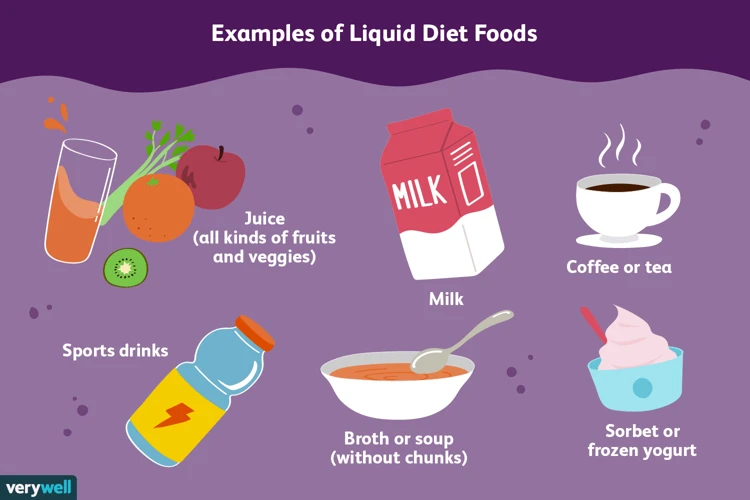
Drinking sugary beverages can be a sneaky way to add unnecessary calories to your diet. And these can add up quickly if you’re not careful. To avoid liquid calories, it’s best to stick with water as your go-to beverage. Drinking plenty of water throughout the day not only helps keep you hydrated, but it can also aid in digestion and help you feel fuller.
If you’re someone who craves something more flavorful than water, there are a few options to consider. You can infuse your water with fresh fruit or herbs to give it a bit of flavor without adding calories. You can also make your own fruit juice using a juicer or blender. This way, you can control the ingredients that go into your drink and avoid any added sugars or preservatives.
It’s important to be mindful of the calories and sugar content in other beverages you consume, too. Sodas, sweetened teas, and sports drinks are all high in sugar and calories. Even some fruit juices may contain added sugars, so it’s best to read labels carefully and check the ingredient list. If you do choose to indulge in these types of drinks, do so in moderation and consider offsetting the calories by reducing your intake of other foods.
Remember, when it comes to weight loss, every calorie counts. Avoiding liquid calories is a simple but effective way to cut unnecessary calories from your diet and improve your overall health. So make sure to stay hydrated with plenty of water and choose other beverages wisely.
10. Plan Ahead
One of the most important habits for weight loss is planning ahead. By taking the time to plan your meals and snacks in advance, you can avoid making last-minute decisions that are often unhealthy. Here are a few tips for effectively planning your meals:
1. Make a grocery list. Before heading to the grocery store, make a list of the foods you need for the week. Stick to the list when you’re at the store to avoid impulse purchases. Planning your meals in advance and creating a corresponding grocery list can also help you save money and reduce food waste.
2. Meal prep. Dedicate a day or two each week to meal prepping. Cook and portion out your meals for the week ahead of time so that you always have healthy options on hand. This can save you time and energy throughout the week, making it easier to stick to your dietary goals.
3. Mix it up. Eating the same meals week after week can get boring and lead to unhealthy choices. To avoid this, plan for variety in your meals. Try new recipes or experiment with different ingredients to keep things interesting.
4. Keep healthy snacks on hand. It’s important to plan for snacks as well as meals. Keep healthy snacks like fruits, veggies, and nuts on hand throughout the week so that you have something to grab when hunger strikes.
5. Be realistic. When planning your meals, be realistic about your schedule and lifestyle. Don’t plan to cook a complicated meal on a night when you know you’ll be exhausted from work, for example. By being realistic and honest with yourself, you’re more likely to stick to your plan.
By taking the time to plan your meals and snacks in advance, you can set yourself up for success on your weight loss journey. Make a grocery list, meal prep, mix it up, keep healthy snacks on hand, and be realistic about your schedule and lifestyle. With these tips, you can make healthy eating a habit and achieve your weight loss goals.
Conclusion
In conclusion, making your meals more filling during weight loss can be challenging but not impossible. Incorporating more fiber, lean protein, and healthy fats in your diet can go a long way in keeping you full and satisfied. Opting for soups or salads, spicing up your meals, drinking more water, and using smaller plates can also help control your appetite and reduce the tendency to overeat. Additionally, planning ahead and avoiding liquid calories are good strategies to stay on track with your weight loss goals. Remember that weight loss is a long-term lifestyle change, and making small tweaks to your diet and eating habits can lead to significant results. With consistency and commitment, you can improve your overall health and achieve sustainable weight loss. Keep experimenting with different foods and strategies to find what works best for you and enjoy the journey towards a healthier you.
Frequently Asked Questions
1. Can adding more fiber to my meals really help with weight loss?
Yes, fiber helps you feel satisfied and fuller for longer, preventing overeating and supporting weight loss goals.
2. How can I incorporate more vegetables into my meals?
You can add veggies as a side dish, mix them in with your main dishes, or even blend them into smoothies or soups.
3. What are some examples of lean protein?
Chicken, turkey, fish, tofu, and egg whites are all good sources of lean protein.
4. How do nuts and avocado add healthy fats to my meals?
Nuts can be sprinkled on top of salads or used as a snack, while avocado can be added as a topping or used to make guacamole.
5. Why is drinking water important for weight loss?
Drinking water helps keep you hydrated and can prevent overeating by making you feel full. It can also boost your metabolism.
6. Can using smaller plates really help me feel fuller?
Yes, studies have shown that using smaller plates can help make smaller portions feel more satisfying.
7. What are some examples of liquid calories to avoid?
Soda, sugary coffee drinks, and alcohol are all examples of liquid calories to avoid when trying to lose weight.
8. How can planning ahead help with weight loss?
Planning out your meals and snacks can help you make healthier choices and prevent reaching for unhealthy options when you’re hungry and unprepared.
9. How does slowing down and chewing my food help with weight loss?
Chewing your food slowly can help you feel fuller faster and prevent overeating. It also aids in digestion and can improve nutrient absorption.
10. What are some examples of spices to use to make meals more satisfying?
Cinnamon, cumin, black pepper, and cayenne pepper can all add flavor to your meals and help boost your metabolism for weight loss.

